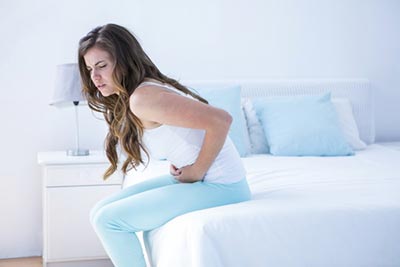Uterine fibroids are usually non-cancerous tissue growths inside of the muscles of the uterine wall. Uterine fibroids can vary in size and shape. They can be single or multiple in number.
The real cause of Uterine Fibroids is not known, however there are some risk factors that lead to their formation, like:
Women who are at a greater risk of developing uterine fibroids include the ones who suffer from obesity, who have family members with uterine fibroids, who gave birth in the past and the ones who are over the age of 30.

Signs and symptoms of uterine fibroids will depend from their size, number and localization inside of the uterus. Uterine fibroids when small can be asymptomatic. However, signs and symptoms of uterine fibroids when they are bigger and multiple include:
Uterine fibroids are diagnosed with the help of:
The treatment of uterine fibroids will depend if they are symptomatic or not. Small and symptomatic uterine fibroids are only monitored, while large, multiple and fibroids that cause severe signs and symptoms are treated. Treatment of uterine fibroids consists of:
Medications – like gonadotropin-releasing hormone agonists are used to balance the levels of estrogen and progesterone. They cause the shrinking of uterine fibroids and stopping of heavy menstrual periods. Pain relievers can help ease the pain which is caused by uterine fibroids, but will not shrink or eliminate them. Birth control pills also can help control the heavy menstrual bleeding, but will also not shrink or eliminate the uterine fibroids.
Surgery – is necessary in cases when very large and multiple uterine fibroids are present. In these cases, myomectomy is performed. This procedure can be done laparoscopically or laparotomic and consists of removing the uterine fibroids.
Hysterectomy is necessary in cases when no other treatment works, and when you don’t want to have children in the future.
Minimally invasive procedures like the MyoSure procedure are now available for treating uterine fibroids. The MyoSure procedure consists of inserting a slander camera inside of the uterus. This slander camera allows good visualization of the inner uterus lining. During the procedure, a slander wand is also inserted which gently cuts the fibroids into small pieces. These small pieces are then removed outside of the uterus. This procedure is especially recommended for women who want to have children in the future.
Do you suffer from uterine fibroids? Come to Century Medical and Dental Center (Downtown Brooklyn, Gravesend, Flatbush, Fort Greene and Midtown Manhattan) for a consultation with one of our Brooklyn gynecologists.
SHARE THIS POST Page Updated on Apr 10, 2025 by Dr. Dvorkina (Primary Care Doctor) of Century Medical & Dental CenterCentury Medical and Dental Center is an accredited healthcare facility in NY that operates in accordance with Article 28, a public health law. This law regulates and recognizes accreditation for public healthcare facilities, ensuring they are licensed and operated correctly. By undergoing the Article 28 process and achieving accreditation, Century Medical and Dental Center demonstrates its commitment to meeting the highest standards of care.
As a multidisciplinary medical center, we have highly qualified doctors, nurses, and support staff who are working hard to provide the best medical care to patients in Midtown Manhattan, NY, Downtown Brooklyn, NY, including Brooklyn Heights, Dumbo, Prospect Heights, Park Slope, Clinton Hill, Boerum Hill, Red Hook, Harlem, Gravesneck, Flatbush, and Bedford-Stuyvesant.